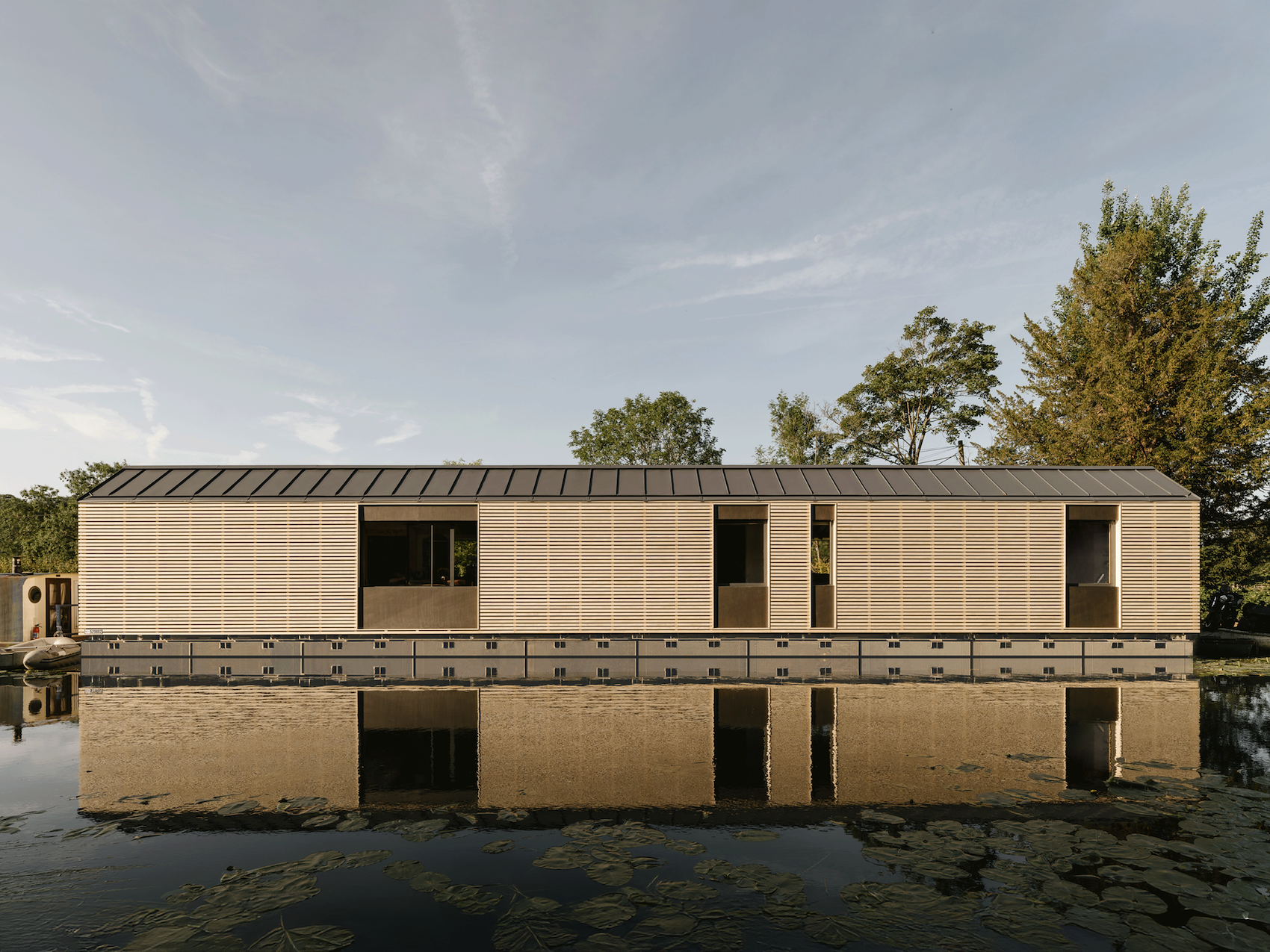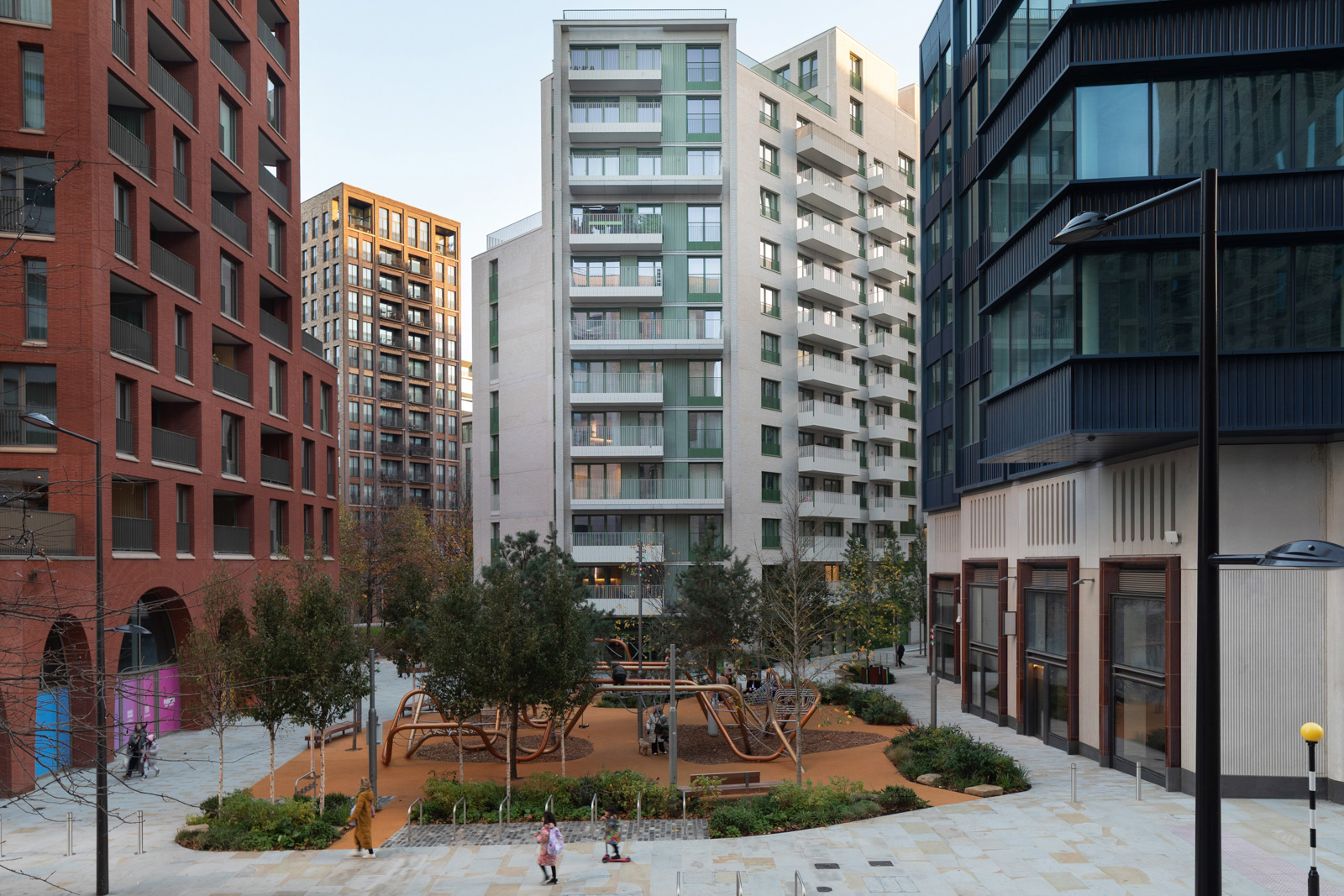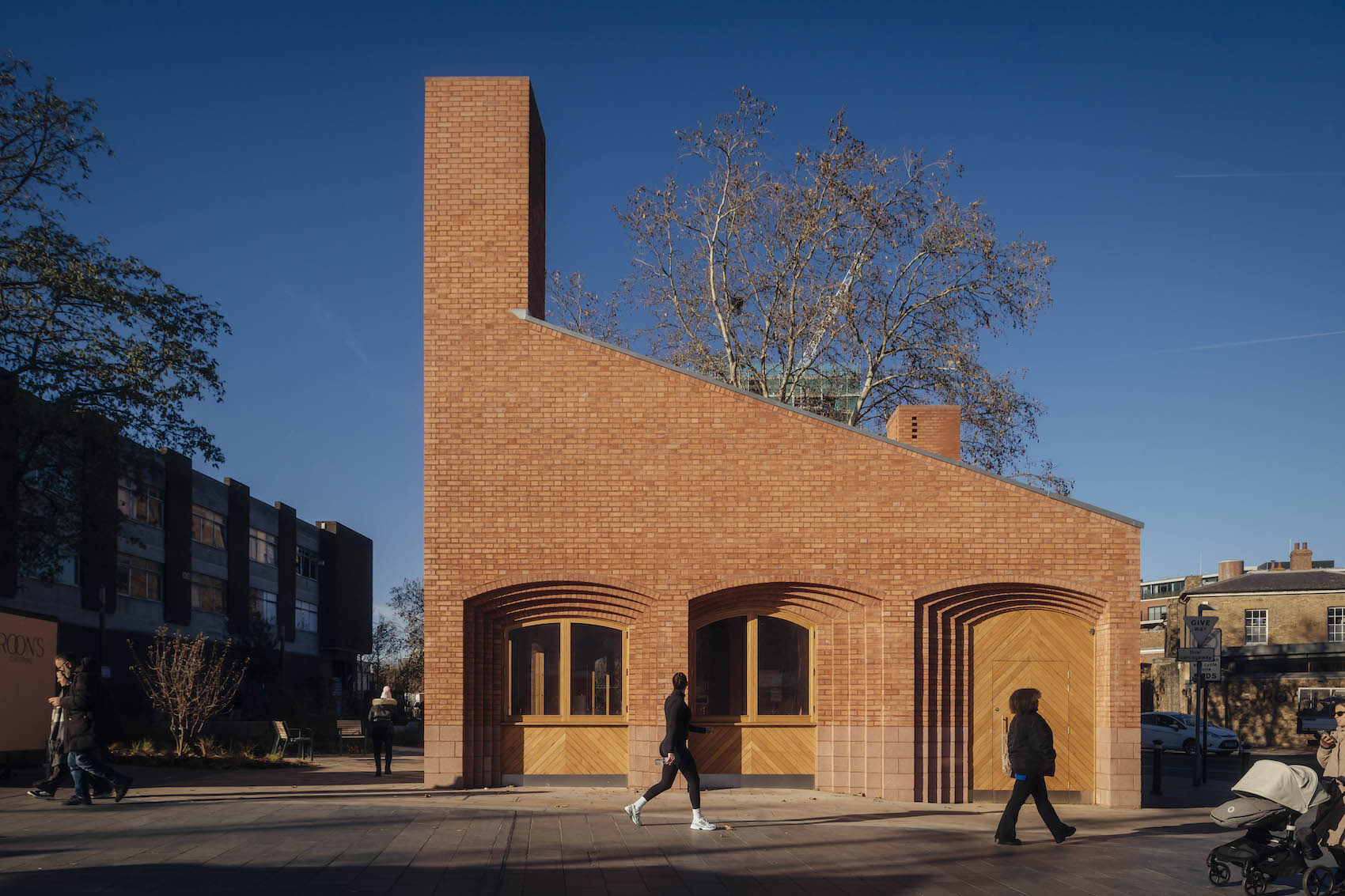It’s taken Unboxed Homes more than a decade to deliver a short terrace of custom-build homes in Peckham, south London. Why did it take so long? And was it worth the wait?
One day back in 2013 architect Jane Middlehurst was on her way to her Peckham studio when she spotted “just a scrappy junk waste site” backing onto a railway viaduct and sandwiched between housing on one side and industrial workspace on the other. Jane had founded Poulsom Middlehurst with her friend Amy Poulsom a couple of years earlier. Together, they tracked down the site’s owner and asked if he was interested in selling. The GLA had just launched its custom build fund, and they thought the site might lend itself to a self-build scheme. “We huddled together a random group of people who might be interested,” Jane recalls. “There was me, there was Amy, and there were some other local people that we’d met.” The plan was to get funding as a group, end up living as neighbours – and build a flagship project for their practice in the process.
They quickly discovered that the GLA fund was designed for developers; would-be residents couldn’t apply as a group. They couldn’t borrow from commercial lenders as they didn’t have the resources to pass the financial checks. But they did know Petra Marko, design director at Solidspace, the boutique development company founded by Roger Zogolovitch and his son Gus. Solidspace had built a reputation for building carefully- crafted homes on small sites that others might overlook. Gus had recently started his own company, Unboxed Homes, with a view to becoming London’s first custom build enabler; developing projects as well-insulated, airtight shells that purchasers could adapt to their budgets, tastes and needs.
The backdrop of railway arches and the adjacent industrial space give the project a gritty edge.
Gus bought the site, funding the project as part of the GLA Custom Build Housing Programme and commissioning Poulsom Middlehurst to obtain planning consent for a terrace of three houses and four apartments to be sold as a shell. In terms of its external expression, the submission was a textbook infill on a tight urban site. Modern in style, but with a polite nod to the rhythm and scale of the residential street, the terraced form belies the irregular, tapering plot, giving the impression of uniform houses, despite the different typologies behind, and the varying depths of the plots. The architects specified a fresh, clean-looking brick – a waterstruck brick manufacturerd using a traditional ‘soft mud’ process – to reflect the project’s contemporary style.
The ‘twist’ lay in the internal planning, and the Zogolovitches insistence that the houses should incorporate Solidspace’s signature split-level configuration, allowing spaces for living, eating and sleeping to flow across a series of interconnected levels.
View looking east along Blenheim Grove towards Rye Lane. The new terrace responds to the pre-existing mix of Georgian and Victorian houses and more recent apartment blocks.
Gus, who lives in one of Solidspace’s early split-level houses (Zog House in London’s Queen’s Park designed by Groves Natcheva), is quick to point out that the split-level section has much to recommend it. “It’s really complicated but it optimises every square inch of space because it effectively gets rid of all the corridors.” In addition, it makes full use of both volume and light, creating spacious and characterful homes. The changes in level create ‘natural’ divisions between different rooms or zones, reducing the need for internal walls. Overall it “allows small houses to punch above their weight.”
It’s also complicated to build, a fact that exacerbated the perennial problem of finding contractors willing and able to deliver high-quality work on relatively modest projects. In retrospect, Gus concedes he had unrealistic expectations. “On paper I made all the right decisions. You outsource. You get a project manager. You free yourself up to get more sites. Maybe it would have worked with something more traditional But you can’t outsource the implementation of innovation. When everybody’s learning, it needs to be you in driving seat. We went through seven contractors. The seventh was effectively me, paying direct labour. I cycled here every single day for seven months, and slowly, slowly slowly, got it done. If I was to change one thing it would be go slower; not take on so many projects, and to do everything myself.”
Finance was also an issue. “Building a shell is standard practice in many countries throughout the world, but we’re not geared up for it here. Raising development finance is a challenge. The custom build fund set up by Boris Johnson came with an interest rate which was based on how risky we were, so of course it went through the roof. We were mullered by Covid, of course, but to some extent it saved us, in that it meant we were able to refinance. Though we still ended up owing a million pounds in interest to the GLA.”
For a long time, Jane, Amy, and their friends from the original working group had held onto the idea that they might still buy into the project once the base build was complete. But the project took so long to realise that people had got married, had children, made other plans. Jane had moved to Sheffield; Amy had moved to the Czech Republic. Gus had to find a new generation of purchasers; simultaneously marketing the location, the project, and the concept of custom build.
It’s not for the faint hearted. Would-be purchasers quickly discovered that mortage finance for custom build is as elusive as development finance. To an extent, each resident has established their own ‘playbook’ for customising their home. Some designed and project managed the fit-out themselves. Others employed an architect. YARD Architects, New Makers Bureau, Matthew Shepherd and Matthew Wood have all delivered projects on the scheme.
A couple of the residents approached Poulsom Middlehurst to design and deliver their fit-out, an offer they politely declined. “We’re very proud of the scheme, and we’ll always be grateful to Gus for keeping us as architects. It was a huge break. But because it took so long, I think we’d had enough.”
View looking west towards Bellenden Road. The wheat-coloured brick complements the mix of different brick types on Blenheim Grove and the surrounding streets.
Postscript
The residents are happy. But what about the team behind the project? “We saw it as our big break.” says Jane, “But it didn’t work out like that. It took so long that we’d all moved on.” But the project has been a formative influence on her and Amy’s practice. They continue to work together from their respective homes in Sheffield and the Czech Republic. The guiding principles behind Blenheim Grove are evident in their new venture, Home Notes, a company – and an app – dedicated to giving clients the agency to carry out their own projects. The strapline on their website reads: ‘budget smarter, plan better and actually enjoy the process of transforming your own home.’
Gus remains characteristically upbeat. He is thrilled that the project has been shortlisted for a RIBA London Award, though he isn’t holding out much hope. Not unreasonably, the jury asked, “how do you want us to judge this?” – a question he struggled to answer. For his part, he’s delighted with the project. “The proof is in the pudding. Residents have found radically different ways to express their individuality while working from the same shell. We’ve ended up with really interesting diverse homes.”
In commercial terms the big win has been the location. By any standards, it’s been a lengthy project; but the costs have been counter-balanced by the concurrent rise in Peckham’s fortunes. Keen to capitalise on rising house prices, Gus opted to retain two flats rather than take any profit from the scheme, gambling that the long-term rise in value will validate the immediate financial pain. In the meantime, the flats are earning their keep as rental properties and “a bit of a show project – I was keen to build up my portfolio and doing up my own place felt more satisfying than buying off the shelf.”
Would he do it again? “I’d be tempted, but it would have to be the right site and the right price. You don’t make as much money on a shell scheme.” Then again, that was never the point. “I made the decision a long time ago that I’m not going to be the kind of developer who follows the easy money. I wouldn’t be my father’s son if I was.”



















